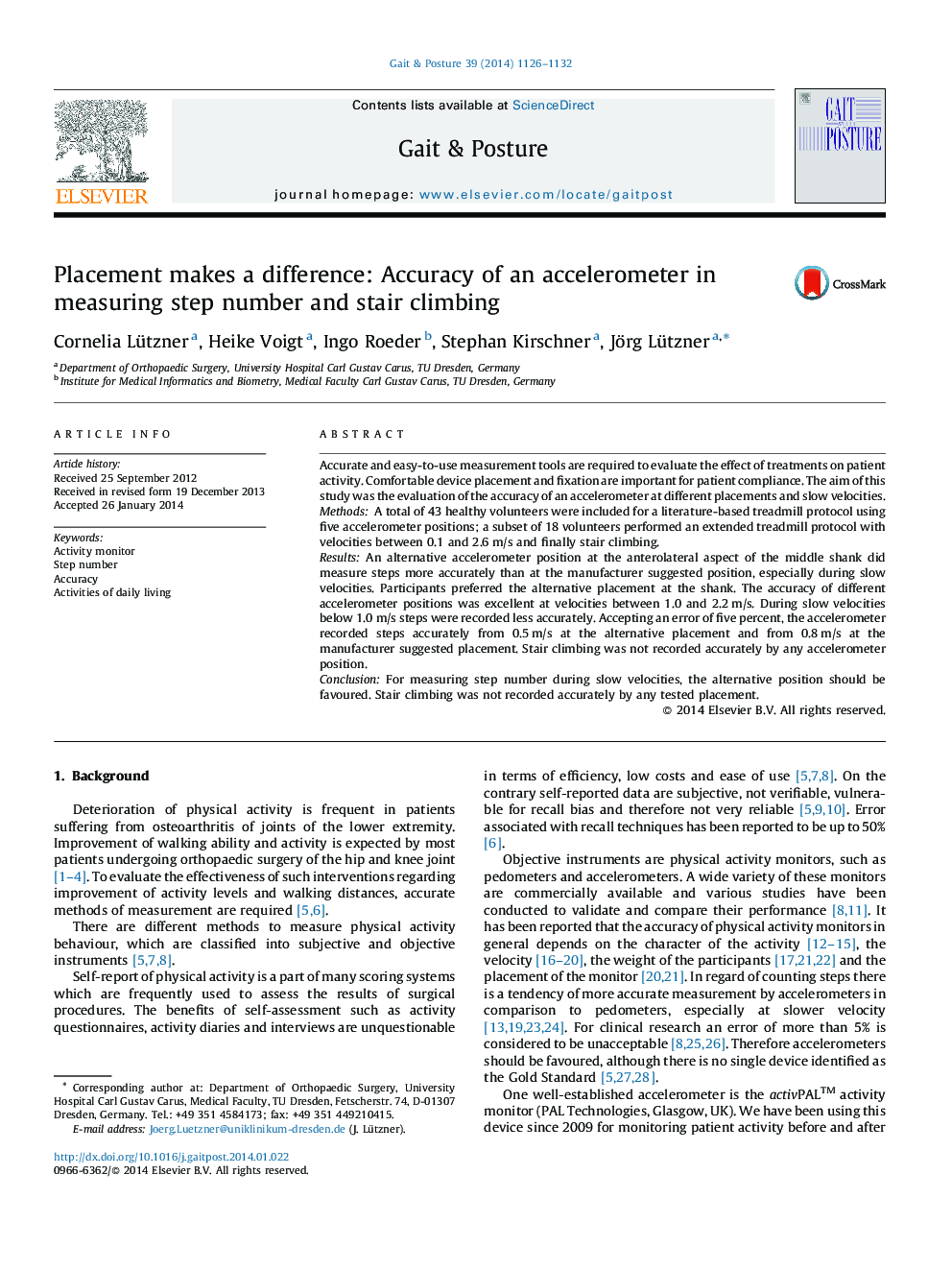| Article ID | Journal | Published Year | Pages | File Type |
|---|---|---|---|---|
| 6206321 | Gait & Posture | 2014 | 7 Pages |
â¢Stair climbing is not recorded accurately by any placement of the accelerometer.â¢Placement of the accelerometer makes a difference during slow velocities.â¢Alternative placement at the shank can be recommended for measuring step number.
Accurate and easy-to-use measurement tools are required to evaluate the effect of treatments on patient activity. Comfortable device placement and fixation are important for patient compliance. The aim of this study was the evaluation of the accuracy of an accelerometer at different placements and slow velocities.MethodsA total of 43 healthy volunteers were included for a literature-based treadmill protocol using five accelerometer positions; a subset of 18 volunteers performed an extended treadmill protocol with velocities between 0.1 and 2.6Â m/s and finally stair climbing.ResultsAn alternative accelerometer position at the anterolateral aspect of the middle shank did measure steps more accurately than at the manufacturer suggested position, especially during slow velocities. Participants preferred the alternative placement at the shank. The accuracy of different accelerometer positions was excellent at velocities between 1.0 and 2.2Â m/s. During slow velocities below 1.0Â m/s steps were recorded less accurately. Accepting an error of five percent, the accelerometer recorded steps accurately from 0.5Â m/s at the alternative placement and from 0.8Â m/s at the manufacturer suggested placement. Stair climbing was not recorded accurately by any accelerometer position.ConclusionFor measuring step number during slow velocities, the alternative position should be favoured. Stair climbing was not recorded accurately by any tested placement.
